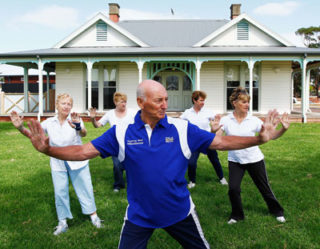Edition 8 – July 2018
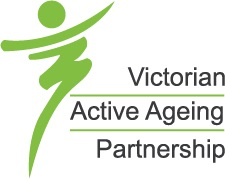
VAAP UPDATE
Musculoskeletal Australia is born! | VAAP 2018 Research and Practice Forum – Have you registered? | Become a VAAP self-assessment tool and resources user! | VAAP short films on ‘harder to reach’ groups of older people
STAKEHOLDER SPOTLIGHT
Older cancer survivors on the move | Melton’s Ageing Well Ambassadors | Dance to thrive | The role of the Wellness and Reablement Consultants in Victoria | Great Getaways for people over 55
RESEARCH UPDATE
Predictors of cognitive functioning into old age | Physical activity programs for people with osteoarthritis (OA) of the hip or knee | The benefits of yoga for healthy ageing
STAY IN THE KNOW
An Agenda for Ageing | ‘Healthy Ageing’ paper | SSIP initiative achieving great results | Do you know about Life Activities Clubs? | ‘Insight’ focus on physical activity and exercise | MSK Help Line
UPCOMING EVENTS
VAAP 2018 Research and Practice Forum | Australian Association of Gerontology 2018 Conference | Webinars for health and fitness professionals
VAAP Update
Musculoskeletal Australia is born!
MOVE muscle bone & joint health has recently rebranded as Musculoskeletal Australia.
Changing our name and brand was a decision we made while working closely with our key stakeholders, members and volunteers. We chose Musculoskeletal Australia as it encompasses all conditions and supports individuals on their journeys. We want to make sure consumers feel heard and understood.
Musculoskeletal Australia will adopt a person-centred, self-directed approach to empower people with musculoskeletal conditions through education and support services. The new organisational name also reflects our inclusive attitude to work with other affiliate organisations to assist consumers as best we can.
Musculoskeletal Australia will continue to lead the Victorian Active Ageing Partnership on behalf of the Victorian Government and in collaboration with Monash University and Fitness Australia.
You can view Musculoskeletal Australia’s new website at: www.msk.org.au.
VAAP 2018 Research and Practice Forum – Have you registered?
In 2018, the VAAP Research and Practice Forum will be held between 9:30am–3:15pm on Thursday 23 August at Rydges Hotel, 186 Exhibition St, Melbourne.
The overall purpose of the Forum is to improve the knowledge and capacity of relevant service providers to successfully engage older people in physical activity opportunities. This year’s Forum will also have a particular focus on networks, partnerships and co-design. The draft Forum program (as of Friday 13 July) is available here.
Continuing education credits are available from Fitness Australia and professional development points are available from Physical Activity Australia. Over 200 people attended the Forums in 2016 and 2017 and excellent feedback was received.
Click here to register to attend the 2018 VAAP Research and Practice Forum and for further information.
Become a VAAP self-assessment tool and resources user!
A key initiative within the VAAP over the last 12 months has been the development of a self-assessment tool and resources (SaTR) based on the VAAP evidence-based best practice framework for the engagement of older people in physical activity. The SaTR takes a continuous quality improvement approach and is intended as a ‘value-adding’ tool.
The different versions of the SaTR have been developed for use by fitness/leisure centres, local councils and community health centres, state sporting associations, U3As and neighbourhood houses. Another version has been specifically developed for use by YMCA centres.
Fifteen organisations recently trialled the draft versions of the SaTR and their feedback has been used to finalise the various versions of the tool, which are now ready for use! The pilot sites provided the following useful feedback to inform the SaTR’s future use:
- The SaTR is best used at least once a year, but several times over a four to six-week period (this extended period will allow greater opportunity for reflection and review, but does not include the time required for any follow-up improvement actions which may need to be undertaken over a longer timeframe);
- You don’t have to work through the SaTR in any particular order, or all at once;
- Using the tool to review activities/programs among a group of relevant staff/volunteers is likely to generate discussion and greater reflection; it also allows people to feel ‘part of the process’ and ensures their support and engagement in any follow-up improvement activities.
Some of the comments from the pilot sites included the following:
- ‘I think that the tool could be used effectively as an annual review (for example, as part of planning for the following year). It should absolutely be used more frequently when introducing a new program for older adults; i.e. used during the design process, throughout the pilot process and as an evaluation at the end of the pilot.’ (Comment from a state sporting association)
- ‘I found it to be a very useful tool. It allows us to reflect on what we do and consider improvements.’ (Comment from a U3A)
- ‘The SaTR would give the structure for us to have more regular and better structured conversations about the delivery of our Ageing Well activities.’ (Comment from a local council)
- ‘Sometimes organisations can offer physical activity opportunities which are great and they can then get a bit complacent about how they are being run and how to ensure ongoing continuity.’ (Comment from a U3A)
- ‘The SaTR is a great self-reflection tool which allows to compare the organisation standards to the suggested VAAP standards. It takes personality out of the service delivery as the suggested VAAP standards are the same for all staff across the service.’ (Comment from a Community health service).
If your organisation is interested in receiving information about the SaTR, please contact Gen Nolan via genevieve@msk.org.au or 8531 8018.
VAAP short films on ‘harder to reach’ groups of older people
A study was undertaken within the VAAP in 2017 to gather evidence to improve the design of physical activity programs and the capacity of activity providers, to increase participation by under-represented and vulnerable older people. Within this group of older people are those who are socio-economically disadvantaged, living with a disability, culturally and linguistically diverse, or living alone. These groups were identified as being at elevated risk of isolation and loneliness in the Commissioner for Senior Victorians’ 2016 report, ‘Ageing is Everyone’s Business’. The Commissioner’s report highlighted the effects of social networks, physical functioning and mobility upon isolation. Community-based physical activity programs have a valuable role to play in addressing these factors.
The qualitative study resulted in the identification of many useful strategies for service providers to employ in better engaging under-represented groups of older adults in physical activity.
Now a series of three short films, which draws on the findings of the 2017 study, is being made as a professional development resource for staff working with groups of older people. It is planned to seek continuing education credits from Fitness Australia and professional development points from Physical Activity Australia as an incentive for fitness professionals to view the films.
The short films and associated information will be available on the VAAP website around the end of August.
Stakeholder Spotlight
Older cancer survivors on the move
Older people with cancer are recognised as a ‘special needs’ group. Regional areas have older populations and higher cancer rates than metropolitan areas.
The Wimmera Region of Victoria has a focus on improving experience and outcomes for older cancer survivors in rural and regional areas and is doing this with two innovative Victorian Cancer Survivorship Program partnership projects. There is increasing evidence for the importance of exercise and physical activity during and beyond cancer treatment – boosting energy levels, increasing physical strength, relieving stress, improving sleep and decreasing fatigue, anxiety and depression are recognised benefits.
The ‘Telehealth for Supportive Survivorship Care’ project has adapted the successful Wimmera cardiac rehabilitation telehealth program to an 8-week Cancer Council Victoria Wellness and Life after Cancer (WaLaC) program. The program involves exercise and education in two-hour sessions. Exercise is group-based at participating health services. Education is then shared via telehealth between those health services. Telehealth provides increased access to programs close to home, peer support for participants and enables the sharing of resources and personnel across health services.
Rural Northwest Health, Stawell Regional Health and Wimmera Health Care Group are collaborating with Cancer Council Victoria and Grampians Integrated Cancer Service. The project is also running in the Hume Region with Hume Regional Integrated Cancer Service and participating health services. The second smaller project aims to improve understanding of the specific needs of older cancer survivors. Regaining functional status, dealing with the impacts of other health issues and coping with the ongoing effects of treatment are three key issues identified. Services currently provided to this group are survivorship programs such as WaLaC, rehabilitation or community-based exercise programs.
Raising the importance of foot health in cancer care is also an element of this project. Older age, chronic disease or cancer treatment side-effects can affect foot health. This reduces independence, safety, quality of life and capacity to exercise or increase physical activity during and beyond cancer care.
Results are encouraging with participants reporting increases in their physical activity and fatigue management. Health professional capacity in survivorship cancer care has also increased.
This article was submitted to the VAAP newsletter by Lea Marshall, Cancer Services Improvement Coordinator, Grampians Integrated Cancer Service with other project partners Carmel O’Kane (Wimmera Health Care Group) and Clare Sutton (Cancer Council Victoria.
Melton’s Ageing Well Ambassadors
For ten years, Melton City Council’s Ageing Well Ambassadors program has utilised the skills and passions of local, senior volunteers to successfully deliver a number of seniors-focused exercise programs.
Each week, five committed Ambassadors deliver their respective programs for an average of 48 participants (Tai Chi – 17 participants, Walking – 25 participants, Nordic Walking – 6 participants).
The reasons for starting the Ambassadors program were that Melton staff had identified a need to establish some low cost exercise programs for seniors; it would provide an opportunity to promote strong, positive messages around ageing; and (initially) there was no budget for paid instructors.
The program has evolved over the years – the early Ambassadors program was broader than the physical activity focus it has today, initially incorporating roles dealing with falls prevention, club development and exercise. Today we have two Walking group leaders, two Nordic Walking group leaders and one Tai Chi for Arthritis leader.
In delivering the Ambassadors program, Council undertakes a number of roles, including providing access to:
- Relevant training (at no cost) e.g. First aid, elder abuse, manual handling, conflict resolution. For the Tai Chi instructor, the costs to attend the required accredited training is paid
- The necessary program equipment e.g. subsidised Nordic Walking poles
- Access to venues for a post-activity cuppa and chat
- Administrative support e.g. reporting and responding to any incidents through Council’s OH&S processes, promoting the programs, etc.
- An ongoing dialogue with Ambassadors about issues and opportunities.
Melton City Council has been fortunate in not having too many challenges in delivering an effective Ambassadors program. Perhaps most challenging has been maintaining a manageable workload for the Ambassadors, who receive regular requests from other Council departments and the community to support other activities.
The Ambassador program has been a tremendous success for all involved, including for the Ambassadors themselves. The Ambassadors develop their leadership skills, they have the esteem and recognition of an appreciative community (two have been awarded as Council’s Citizen of the Year), and they have developed many new connections and friendships.
As one of the Ambassadors said about her experience in the program:
‘Being an ambassador for ageing is a great vehicle for connecting with members of the Melton Community. It provides me with the opportunity to start up conversation with community members telling them about the availability of programmes that are there for them to try. I go to the Vic Market weekly and often wear my jacket. This has prompted conversations with people outside of the municipality. Many are envious of what is provided here in Melton City. I wear my jacket and T-shirt when on holidays and this too prompts conversations allowing me to speak about Melton City Council and to find out more about what is on offer in other parts of Australia. I do take the opportunity to speak out about our community whenever possible.’
Darren Cunningham at Melton City Council says that ‘Local elder volunteers can be a tremendous resource to increase physical activity options for seniors in your community too, and I’d be happy to share our insights, resources and experiences if you’d like to know more.’
This article was submitted to the VAAP newsletter by Darren Cunningham, Positive Ageing Officer, Melton City Council
Dance to thrive
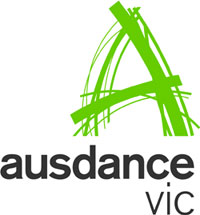
Move it or lose it! The message is clear. Many people, however, find it difficult to maintain enthusiasm for ongoing exercise. A growing body of research now shows that dance can provide the motivation needed by blending creativity, social interaction, artistic goals and physical activity, with the added bonus of very low attrition rates (People Dancing 2016; Hwang & Braun, 2015; Hui et al 2009; Young et al 2007; Keogh et al 2009; Miller & Buys, 2007; Merom et al 2013). The neurosciences also suggest that dance improves cognitive function and leads to improvements in brain plasticity, proprioception, memory consolidation, navigation in space, balance and gait. (Kattenstroth et al 2013; Grafton & Cross, 2008, 2009; Ramsay & Riddoch, 2001; Verghese, 2006; Zhang et al 2008.)
With more focus on seniors and the elderly, dance is gaining momentum in Australia. ‘Dance for health’ programs are established in the United Kingdom, the US and the Netherlands, but what is happening in Australia? Where are senior and elder dance programs taking place, who are its leaders and what sort of training, experience and qualifications do they have?
In 2017, Ausdance Victoria, the peak body for dance, conducted research around these questions. They aimed to contextualise the global and national trend and to prepare the Australian Dance Industry for future demand. They reviewed 41 articles and papers, scanned 152 sites (102 for dance programs and 50 for training or professional development), released a survey which received 113 responses, ran three focus groups with a total of 19 participants and held 12 face-to-face interviews.
They found:
- 79 dance programs for older dancers currently operating in Australia.
- 60 were for active and agile participants, 64 for active and ambulant programs, 44 for people with mobility restrictions and/or health conditions and 24 taking place in care facilities (It is acknowledged that there are likely many more yet to be identified).
- 48 international training and professional development programs
- Three Australian accredited training programs
- Several Australian non-accredited training or professional learning programs
- No Victorian training (accredited or non-accredited).
For a copy of the report, please contact Dr Katrina Rank at Ausdance Victoria: education.vic@ausdance.org.au
This article was submitted to the VAAP newsletter by Dr Katrina Rank, Director of Education and Lifelong Learning, Ausdance Victoria
The role of the Wellness and Reablement Consultants in Victoria
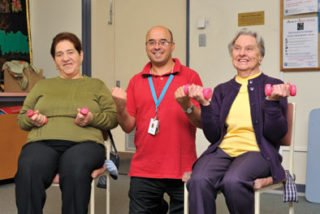
A focus on wellness and reablement approaches in the home care sector improves function, independence and quality of life for older people and younger people with disabilities.
Wellness and Reablement Consultants support service providers funded under the Commonwealth Home Support Program (CHSP) and Home and Community Care Program for Younger Persons (HACC PYP) to implement Wellness and Reablement in Victoria. This work is jointly funded by the Commonwealth Department of Health and Victorian Department of Health & Human Services. In Victoria, prior to 2017, ‘Wellness and Reablement’ was known as the ‘Active Service Model’ or ‘ASM’.
Wellness and Reablement Consultants:
- assist service providers to gain a consistent understanding of wellness and reablement approaches, implications for practice and systems
- provide service providers with practical support to implement wellness and reablement into practice as a broad sustainable change management strategy
- share examples of good practice, practice learnings and relevant resources to support a wellness approach
- support and guide service providers to build capacity to embed person-centred, inclusive approaches to service delivery that promote independence and autonomy.
CHSP and HACC PYP services include domestic assistance, personal care, allied health, nursing, meals, home maintenance and social support.
In a wellness approach service providers do more ‘with’ clients than just ‘for’ clients. When supporting clients, service providers recognise clients continue to have goals to achieve and can make active and meaningful contributions to their communities.
Wellness and reablement approaches recognise the importance of social connections and physical activity in health. Support provided under these approaches aspire to build clients’ capacity and where possible reconnect clients with social and/or physical activities in the community when the client desires this and where safe.
Wellness and Reablement Consultants work across the nine Commonwealth Aged Care Planning Regions in Victoria. Service providers should contact their local Wellness and Reablement Consultant for support to implement wellness and reablement approaches.
Contact details can be found at the following webpage:
https://www2.health.vic.gov.au/ageing-and-aged-care/home-and-community-care/hacc-program-for-younger-people/hacc-program-guidelines/hacc-quality-and-service-development/active-service-model/regional-industry-consultants
Great Getaways for people over 55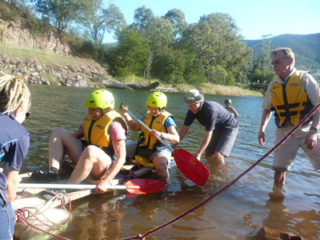
Residential camping has been part of Australian culture for many years including camp programs for people over 55. In 2014, a camp was held by the Council of the Ageing (COTA), Australian Camps Association (ACA) and YMCA Victoria to offer an avenue for older people to enjoy the benefits of the great outdoors.
More recently (May 2017), the ACA held a co‐design workshop (involving 14 seniors) to develop a direction of camps for older people. This was led by Dr Liz Cyarto and Louise Karch. The name ‘Great Getaways’ was born as it was suggested ‘camps’ meant sleeping in tents rather than in cabins.
The workshop also identified that there should be two types of pilot Getaways;
- Adventurers Getaways and
- ‘Have A Try’ (HAT) Getaways
The Adventurers Getaway has a more physically challenging program, such as rock climbing, abseiling, high ropes course and a long hike. The HAT Getaway program was for beginners or people who were less confident in outdoor activities. Activities for the HAT Getaway included archery, cycling and canoeing. These pilot Getaways were hosted at Licola Wilderness Village in October 2017. Since then, the ACA has hosted one Getaway in Anglesea and have two more are planned for 2018. The Great Getaways will be expanded interstate in the future.
Feedback from participants of each Getaway to date has been very positive. The Getaways offer shared cabin/bunkroom accommodation and the programs are fully catered with camp staff leading most of the specialised activities. Participants are encouraged to try all activities. So, what did we learn?
The Great Getaway program and its associated research shows clearly that dedicated camps tailored for older adults can make an important contribution to their health and wellbeing. An unexpected finding was that a segment of older adults want to experience high intensity, physically challenging activities. By combining the benefits of social connection, exposure to natural environments, and increased physical activity/challenge, the Great Getaway programs have enormous potential to make a real difference to our quality of life as we age.
For further information please visit the Australian Camps Association website www.auscamps.asn.au or contact Alan Bull on 03 9863 6822 or email seniors@auscamps.asn.au
This article was submitted to the VAAP newsletter by Alan Bull, Project Manager, Australian Camps Association
Research Update
Predictors of cognitive functioning into old age
Cognitive functioning has been found to be associated with quality of life, independence, morbidity and mortality. A number of studies have found that cognitive functioning in general declines with age, but the available evidence indicates that fluid intelligence (e.g., memory, processing speed) shows a greater degree of decline than crystallised intelligence (e.g., verbal ability, general knowledge). This large cohort study examined the factors that predicted decline in aspects of cognitive functioning, in particular fluid intelligence, in a large sample of English adults.
The study involved 10,626 adults aged 50 years and over who were enrolled in the English Longitudinal Study of Ageing. Participants were initially recruited between 1998-2001 and have been followed up every two years. At each wave, standardised cognitive function tests have been undertaken to measure memory, processing speed and executive function. These were also used to derive a global cognitive function measure. Predictor variables that were measured included behaviours (physical activity, alcohol, smoking), health conditions (depression, dementia, cardiovascular disease, diabetes) and socio-demographic factors (sex, age, education, socioeconomic status).
Data obtained over eight years of follow-up showed that physical inactivity predicted decline in global cognitive function in both men and women, and a decline in memory in women. Limitations in performing activities of daily living were also predictive of memory decline in women, and global cognitive function in both sexes. It was found overall that women had significantly less decline in memory, executive function, and global cognitive function than men, and that increasing age and dementia predicted faster rates of decline in all domains of cognitive function.
The complete article can be viewed at: Zaninotto P, Batty GD, Allerhand M, Deary IJ. ‘Cognitive function trajectories and their determinants in older people: 8 years of follow-up in the English Longitudinal Study of Ageing’. Journal of Epidemiology and Community Health. 2018 Apr 24:jech-2017. Available at: https://jech.bmj.com/content/early/2018/04/24/jech-2017-210116.long
Physical activity programs for people with osteoarthritis (OA) of the hip or knee
The Australian National Health Survey found in 2014-15 that over 30% of adults aged 65 years and older report living with osteoarthritis (OA). Chronic peripheral joint pain, particularly of the hip and knee, is very common among those with this condition. Physical activity is recommended to reduce joint pain and improve physical functioning, and may also be beneficial for social and mental well-being. This systematic review was undertaken to investigate the impact of physical activity on pain, physical and psychosocial function among adults with OA of the hip and/or knee, and to explore the optimal design of programs for people with this condition.
As a mixed methods review this included 21 intervention studies (all randomised controlled trials) that investigated the effects of physical activity programs, together with 12 qualitative studies that elicited the views of participants on issues ranging from health beliefs to experiences of exercise. Fifteen of the intervention studies included strength and resistance based activities, with seven combining these with aerobic exercises. The remainder examined Tai Chi, yoga and water-based exercises. The majority of the interventions (14/21) were group-based, or a combination of group and individual exercise, and most were delivered by trained fitness/exercise instructors or physiotherapists.
The review of the intervention studies found moderate quality evidence that exercise reduced pain, improved physical function and had small positive effects on depression. There was also found to be evidence, albeit of lower quality, that participation in physical activity programs improved social functioning. Qualitative data obtained from people with OA concerning how programs could be improved found a perceived need for: advice and information about the safety and value of physical activity; tailoring of exercises to individual abilities, needs and preferences; and stronger personal support, including addressing unhelpful health beliefs.
The full report of this study is provided at: Hurley M, Dickson K, Hallett R, Grant R, Hauari H, Walsh N, Stansfield C, Oliver S. ‘Exercise interventions and patient beliefs for people with hip, knee or hip and knee osteoarthritis: a mixed methods review’. Cochrane Database of Systematic Reviews. 2018 Jan 1;4. Available at: https://www.researchgate.net/publication/324771787_Exercise_interventions_and_patient_beliefs_for_people_with_hipknee_or_hip_and_knee_osteoarthritis_a_mixed_methods_reviewReview
The benefits of yoga for healthy ageing
Population studies have found that higher levels of physical activity and mobility are associated with better mental health in older adults, but there is limited research concerning the effectiveness of strategies for improving health-related quality of life (HRQOL) and mental well-being among older people. Yoga is a mind-body activity that has been found to be popular among older people and to be beneficial for strength, flexibility, balance and mobility. The systematic review reported in this article was undertaken to assess the impact of yoga upon HRQOL and mental-being in people aged 60 years and over.
The review included 12 trials of high methodological quality, all of which entailed randomisation to a yoga program or a control condition. The studies recruited diverse participants, including healthy community-dwelling older adults, people with a history of cancer, and those living with conditions such as Parkinson’s disease, osteoarthritis or chronic obstructive pulmonary disease. The Yoga styles trialled in the different studies were Hatha, Yogasana, Vinyasa, Thai Yoga, Iyengar and Viniyoga. These were conducted in sessions ranging from 45–90 minutes in length, in 1–3 classes per week, over 8–24 weeks in total. There were steps taken in several studies to modify the yoga poses to the needs and abilities of the participants, with the assistance of devices such as blocks, blankets and straps. All programs were lead by trained yoga therapists.
The pooled data from 752 participants across the 12 studies showed that yoga had a medium positive impact on HRQOL and a smaller, but still significant, positive effect on mental well-being. The authors recognised that, while encouraging, it was uncertain how much these benefits were due to the yoga poses or to the relaxation and meditation aspects of yoga.
The full article can be found at: Tulloch A, Bombell H, Dean C, Tiedemann A. ‘Yoga-based exercise improves health-related quality of life and mental well-being in older people: a systematic review of randomised controlled trials.’ Age and Ageing. 2018; 47(4):537-44.
Access to the article may depend on your institutional rights.
Stay in the Know
An Agenda for Ageing
An alliance of 20 organisations, led by COTA Victoria, is calling on the Victorian Government to create a vision for 21st century modern ageing. Read more.
‘Healthy Ageing’ paper
Inner East PCP and the National Ageing Research Institute have produced a paper exploring the theoretical frameworks, strategic and legislative context, factors influencing healthy ageing, interventions and impact. Read more.
SSIP initiative achieving great results
The Strengthening Seniors Inclusion and Participation in Local Communities initiative is a key component of the Victorian Government’s response to the Commissioner for Senior Victorians’ report ‘Ageing is everyone’s business’. Read more.
Do you know about Life Activities Clubs?
Life Activities Clubs support people to manage their life transitions through educational, social, physical and recreational activities. Read more.
‘Insight’ focus on physical activity and exercise
The SBS program ‘Insight’ recently discussed issues around physical activity and exercise. If you missed it, you can view it now.
Information and advice on musculoskeletal conditions
The MSK Help Line is staffed by clinically trained nurses and experienced volunteers and can provide information and advice to staff and older people. Find out more.
Upcoming Events
Victorian Active Ageing Partnership 2018 Research and Practice Forum
Rydges on Exhibition
Melbourne
Thursday 23 August 2018
BOOK NOW
Australian Association of Gerontology 2018 Conference
Melbourne Conference and Exhibition Centre
Wednesday 21–Friday 23 November 2018
READ MORE
Webinars for health and fitness professionals
Various musculoskeletal conditions can often impact on an older person’s ability to be physically active. These webinars focus on the evidence-based management of these conditions. Also, the October webinar is free! READ MORE.


